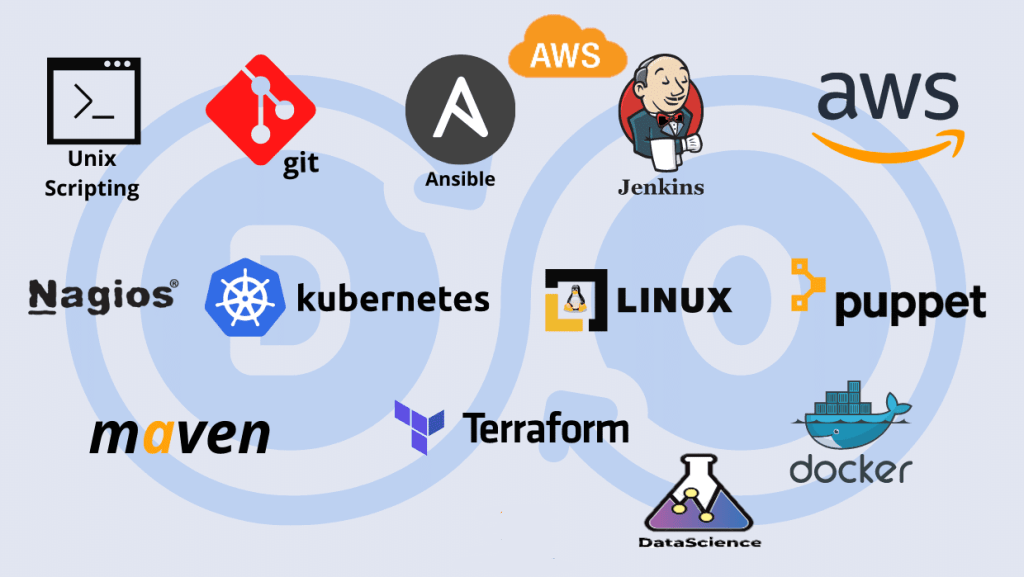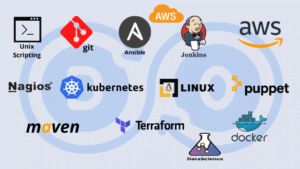Financial Statements: List of Types and How to Read Them
What Are Financial Statements?
Financial statements are written records that convey the business activities and the financial performance of a company. Financial statements are often audited by government agencies, accountants, firms, etc. to ensure accuracy and for tax, financing, or investing purposes. For-profit primary financial statements include the balance sheet, income statement, statement of cash flow, and statement of changes in equity. Nonprofit entities use a similar but different set of financial statements.
Key Takeaways
- Financial statements are written records that convey the business activities and the financial performance of an entity.
- The balance sheet provides an overview of assets, liabilities, and shareholders’ equity as a snapshot in time.
- The income statement primarily focuses on a company’s revenues and expenses during a particular period. Once expenses are subtracted from revenues, the statement produces a company’s profit figure called net income.
- The cash flow statement (CFS) measures how well a company generates cash to pay its debt obligations, fund its operating expenses, and fund investments.
- The statement of changes in equity records how profits are retained within a company for future growth or distributed to external parties.
Understanding Financial Statements
Investors and financial analysts rely on financial data to analyze the performance of a company and make predictions about the future direction of the company’s stock price. One of the most important resources of reliable and audited financial data is the annual report, which contains the firm’s financial statements.
The financial statements are used by investors, market analysts, and creditors to evaluate a company’s financial health and earnings potential. The three major financial statement reports are the balance sheet, income statement, and statement of cash flows.
Not all financial statements are created equally. The rules used by U.S. companies is called Generally Accepted Accounting Principles, while the rules often used by international companies is International Financial Reporting Standards (IFRS). In addition, U.S. government agencies use a different set of financial reporting rules.
Balance Sheet
The balance sheet provides an overview of a company’s assets, liabilities, and shareholders’ equity as a snapshot in time. The date at the top of the balance sheet tells you when the snapshot was taken, which is generally the end of the reporting period. Below is a breakdown of the items in a balance sheet.
Assets
- Cash and cash equivalents are liquid assets, which may include Treasury bills and certificates of deposit.
- Accounts receivables are the amount of money owed to the company by its customers for the sale of its product and service.
- Inventory is the goods a company has on hand, which are intended to be sold as a course of business. Inventory may include finished goods, work in progress that is not yet finished, or raw materials on hand that have yet to be worked.
- Prepaid expenses are costs that have been paid in advance of when they are due. These expenses are recorded as an asset because their value of them has not yet been recognized; should the benefit not be recognized, the company would theoretically be due a refund.
- Property, plant, and equipment are capital assets owned by a company for its long-term benefit. This includes buildings used for manufacturing or heavy machinery used for processing raw materials.
- Investments are assets held for speculative future growth. These aren’t used in operations; they are simply held for capital appreciation.
- Trademarks, patents, goodwill, and other intangible assets can’t physically be touched but have future economic (and often long-term benefits) for the company.
Liabilities
- Accounts payable are the bills due as part of the normal course of operations of a business. This includes utility bills, rent invoices, and obligations to buy raw materials.
- Wages payable are payments due to staff for time worked.
- Notes payable are recorded debt instruments that record official debt agreements including the payment schedule and amount.
- Dividends payable are dividends that have been declared to be awarded to shareholders but have not yet been paid.
- Long-term debt can include a variety of obligations including sinking bond funds, mortgages, or other loans that are due in their entirety in longer than one year. Note that the short-term portion of this debt is recorded as a current liability.
Shareholders’ Equity
- Shareholders’ equity is a company’s total assets minus its total liabilities. Shareholders’ equity (also known as stockholders’ equity) represents the amount of money that would be returned to shareholders if all of the assets were liquidated and all of the company’s debt was paid off.
- Retained earnings are part of shareholders’ equity and are the amount of net earnings that were not paid to shareholders as dividends.
Example of a Balance Sheet
Below is a portion of ExxonMobil Corporation’s (XOM) balance sheet for fiscal year 2021, reported as of Dec. 31, 2021.
- Total assets were $338.9 billion.
- Total liabilities were $163.2 billion.
- Total equity was $175.7 billion.
- Total liabilities and equity were $338.9 billion, which equals the total assets for the period.
Understand the Bookkeeping for Effective Financial Management
Income Statement
Unlike the balance sheet, the income statement covers a range of time, which is a year for annual financial statements and a quarter for quarterly financial statements. The income statement provides an overview of revenues, expenses, net income, and earnings per share.
Revenue
Operating revenue is the revenue earned by selling a company’s products or services. The operating revenue for an auto manufacturer would be realized through the production and sale of autos. Operating revenue is generated from the core business activities of a company.
Non-operating revenue is the income earned from non-core business activities. These revenues fall outside the primary function of the business. Some non-operating revenue examples include:
- Interest earned on cash in the bank
- Rental income from a property
- Income from strategic partnerships like royalty payment receipts
- Income from an advertisement display located on the company’s property
Other income is the revenue earned from other activities. Other income could include gains from the sale of long-term assets such as land, vehicles, or a subsidiary.
Expenses
Primary expenses are incurred during the process of earning revenue from the primary activity of the business. Expenses include the cost of goods sold (COGS), selling, general and administrative expenses (SG&A), depreciation or amortization, and research and development (R&D).
Typical expenses include employee wages, sales commissions, and utilities such as electricity and transportation.
Expenses that are linked to secondary activities include interest paid on loans or debt. Losses from the sale of an asset are also recorded as expenses.
The main purpose of the income statement is to convey details of profitability and the financial results of business activities; however, it can be very effective in showing whether sales or revenue is increasing when compared over multiple periods.
Investors can also see how well a company’s management is controlling expenses to determine whether a company’s efforts in reducing the cost of sales might boost profits over time.
Example of an Income Statement
Below is a portion of ExxonMobil Corporation’s income statement for fiscal year 2021, reported as of Dec. 31, 2021.
- Total revenue was $276.7 billion.
- Total costs were $254.4 billion.
- Net income or profit was $23 billion.
Cash Flow Statement
The cash flow statement (CFS) measures how well a company generates cash to pay its debt obligations, fund its operating expenses, and fund investments. The cash flow statement complements the balance sheet and income statement.
The CFS allows investors to understand how a company’s operations are running, where its money is coming from, and how money is being spent. The CFS also provides insight as to whether a company is on a solid financial footing.
There is no formula, per se, for calculating a cash flow statement. Instead, it contains three sections that report cash flow for the various activities for which a company uses its cash. Those three components of the CFS are listed below.
Operating Activities
The operating activities on the CFS include any sources and uses of cash from running the business and selling its products or services. Cash from operations includes any changes made in cash accounts receivable, depreciation, inventory, and accounts payable. These transactions also include wages, income tax payments, interest payments, rent, and cash receipts from the sale of a product or service.
Investing Activities
Investing activities include any sources and uses of cash from a company’s investments in the long-term future of the company. A purchase or sale of an asset, loans made to vendors or received from customers, or any payments related to a merger or acquisition is included in this category.
Also, purchases of fixed assets such as property, plant, and equipment (PPE) are included in this section. In short, changes in equipment, assets, or investments relate to cash from investing.
Financing Activities
Cash from financing activities includes the sources of cash from investors or banks, as well as the uses of cash paid to shareholders. Financing activities include debt issuance, equity issuance, stock repurchases, loans, dividends paid, and repayments of debt.
The cash flow statement reconciles the income statement with the balance sheet in three major business activities.
Example of a Cash Flow Statement
Below is a portion of ExxonMobil Corporation’s cash flow statement for fiscal year 2021, reported as of Dec. 31, 2021. We can see the three areas of the cash flow statement and their results.
- Operating activities generated a positive cash flow of $48 billion.
- Investing activities generated negative cash flow or cash outflows of -$10.2 billion for the period. Additions to property, plant, and equipment made up the majority of cash outflows, which means the company invested in new fixed assets.
- Financing activities generated negative cash flow or cash outflows of -$35.4 billion for the period. Reductions in short-term debt and dividends paid out made up the majority of the cash outflows.
Statement of Changes in Shareholder Equity
The statement of changes in equity tracks total equity over time. This information ties back to a balance sheet for the same period; the ending balance on the change of equity statement is equal to the total equity reported on the balance sheet.
The formula for changes to shareholder equity will vary from company to company; in general, there are a couple of components:
- Beginning equity: this is the equity at the end of the last period that simply rolls to the start of the next period.
- (+) Net income: this is the amount of income the company earned in a given period. The proceeds from operations are automatically recognized as equity in the company, and this income is rolled into retained earnings at year-end.
- (-) Dividends: this is the amount of money that is paid out to shareholders from profits. Instead of keeping all of a company’s profits, the company may choose to give some profits away to investors.
- (+/-) Other comprehensive income: this is the period-over-period change in other comprehensive income. Depending on transactions, this figure may be an addition or subtraction from equity.
In ExxonMobil’s statement of changes in equity, the company also records activity for acquisitions, dispositions, amortization of stock-based awards, and other financial activity. This information is useful to analyze to determine how much money is being retained by the company for future growth as opposed to being distributed externally.
Consolidated Statement of Changes in Equity, ExxonMobil (2021).
Statement of Comprehensive Income
An often less utilized financial statement, a statement of comprehensive income summarizes standard net income while also incorporating changes in other comprehensive income (OCI). Other comprehensive income includes all unrealized gains and losses that are not reported on the income statement. This financial statement shows a company’s total change in income, even gains and losses that have yet to be recorded in accordance to accounting rules.
Examples of transactions that are reported on the statement of comprehensive income include:
- Net income (from the statement of income).
- Unrealized gains or losses from debt securities
- Unrealized gains or losses from derivative instruments
- Unrealized translation adjustments due to foreign currency
- Unrealized gains or losses from retirement programs
In the example below, ExxonMobil has over $2 billion of net unrecognized income. Instead of reporting just $23.5 billion of net income, ExxonMobil reports nearly $26 billion of total income when considering other comprehensive income.
Consolidated Statement of Comprehensive Income, Exxon Mobil 2021.
Nonprofit Financial Statements
Nonprofit organizations record financial transactions across a similar set of financial statements. However, due to the differences between a for-profit entity and a purely philanthropic entity, there are differences in the financial statements used. The standard set of financial statements used for a nonprofit entity includes:
- Statement of Financial Position: this is the equivalent of a for-profit entity’s balance sheet. The largest difference is nonprofit entities do not have equity positions; any residual balances after all assets have been liquidated and liabilities have been satisfied are called “net assets”
- Statement of Activities: this is the equivalent of a for-profit entity’s statement of income. This report tracks the changes in operation over time including the reporting of donations, grants, event revenue, and expenses to make everything happen.
- Statement of Functional Expenses: this is specific to non-profit entities. The statement of functional expenses reports expenses by entity function (often broken into administrative, program, or fundraising expenses). This information is distributed to the public to explain what proportion of company-wide expenses are related directly to the mission.
- Statement of Cash Flow: this is the equivalent of a for-profit entity’s statement of cash flow. Though the accounts listed may vary due to the different nature of a nonprofit organization, the statement is still divided into operating, investing, and financing activities.
The purpose of an external auditor is to assess whether an entity’s financial statements have been prepared in accordance with prevailing accounting rules and whether there are any material misstatements impacting the validity of results.
Limitations of Financial Statements
Although financial statements provide a wealth of information on a company, they do have limitations. The statements are open to interpretation, and as a result, investors often draw vastly different conclusions about a company’s financial performance.
For example, some investors might want stock repurchases while other investors might prefer to see that money invested in long-term assets. A company’s debt level might be fine for one investor while another might have concerns about the level of debt for the company.
When analyzing financial statements, it’s important to compare multiple periods to determine if there are any trends as well as compare the company’s results to its peers in the same industry.
Last, financial statements are only as reliable as the information being fed into the reports. Too often, it’s been documented that fraudulent financial activity or poor control oversight have led to misstated financial statements intended to mislead users. Even when analyzing audited financial statements, there is a level of trust that users must place in the validity of the report and the figures being shown.
What Are the Main Types of Financial Statements?
The three main types of financial statements are the balance sheet, the income statement, and the cash flow statement. These three statements together show the assets and liabilities of a business, its revenues and costs, as well as its cash flows from operating, investing, and financing activities.
What Are the Main Items Shown in Financial Statements?
Depending on the corporation, the line items in a financial statement will differ; however, the most common line items are revenues, costs of goods sold, taxes, cash, marketable securities, inventory, short-term debt, long-term debt, accounts receivable, accounts payable, and cash flows from investing, operating, and financing activities.
What Are the Benefits of Financial Statements?
Financial statements show how a business operates. It provides insight into how much and how a business generates revenues, what the cost of doing business is, how efficiently it manages its cash, and what its assets and liabilities are. Financial statements provide all the detail on how well or poorly a company manages itself.
How Do You Read Financial Statements?
Financial statements are read in several different ways. First, financial statements can be compared to prior periods to better understand changes over time. For example, comparative income statements report what a company’s income was last year and what a company’s income is this year. Noting the year-over-year change informs users of the financial statements of a company’s health.
Financial statements are also read by comparing the results to competitors or other industry participants. By comparing financial statements to other companies, analysts can get a better sense of which companies are performing the best and which are lagging behind the rest of the industry.
What Is GAAP?
Generally Accepted Accounting Principles (GAAP) are the set of rules by which United States companies must prepare their financial statements. It is the guidelines that explain how to record transactions, when to recognize revenue, and when expenses must be recognized. International companies may use a similar but different set of rules called International Financial Reporting Standards (IFRS).
The Bottom Line
Financial statements are the ticket to the external evaluation of a company’s financial performance. The balance sheet reports a company’s financial health through its liquidity and solvency, while the income statement reports a company’s profitability. A statement of cash flow ties these two together by tracking sources and uses of cash. Together, financial statements communicate how a company is doing over time and against its competitors.




